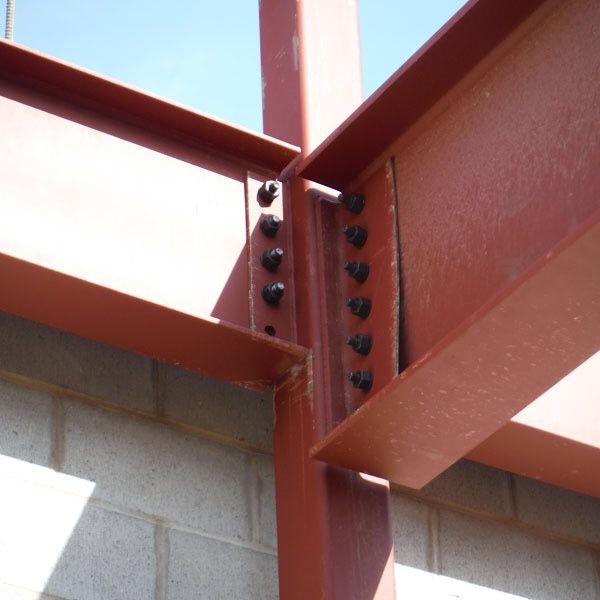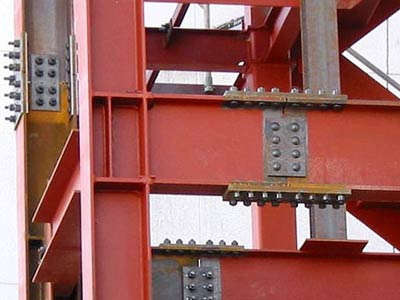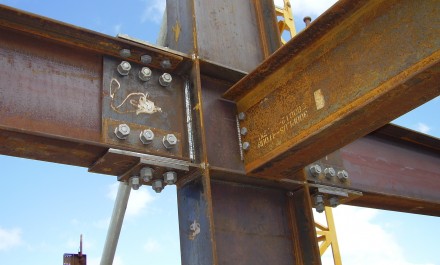Shear (semi rigid / simple) connections
Shear connections primarily carry shear loading (although they typically also carry axial loading). They are the most common type of structural steel connection, and are referred to as “simple” or “semi-rigid” connections because no bending moment is considered at the beam bends. Common shear connections include plates, web angles, and seat angles.
Axial connections
Axial connections primarily carry axial loads and include splices, bracing, truss connections, and hangers. They are typically used to connect columns to columns, or beams to beams sometimes with different section sizes.
Moment (rigid) connections
Moment connections primarily carry moment loading, however are usually designed to resist shear and axial loading as well. For this reason, they are referred to as “rigid” or “fully restrained” connections and are used to create a frame. Common moment connections include directly welded members, flange plates, and end plate connections.
William Kuang
Engineer and Software Developer
BEng Mechanical (Hons1)
LinkedIn
Engineer and Software Developer
BEng Mechanical (Hons1)




